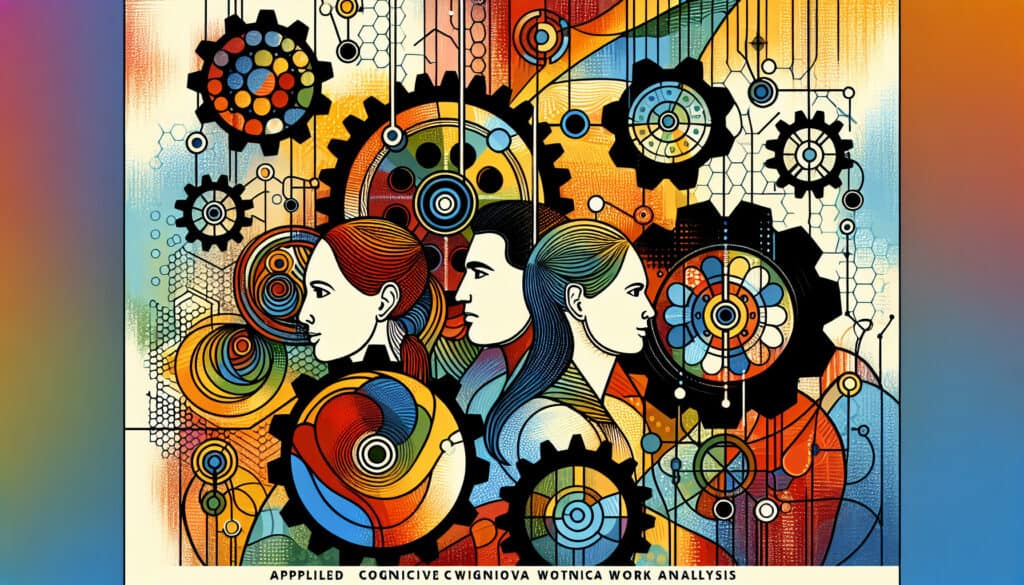A framework for analyzing complex socio-technical systems to understand how work is performed.
- Methodologies: Customers & Marketing, Economics, Product Design
Applied Cognitive Work Analysis (ACWA)

Applied Cognitive Work Analysis (ACWA)
- Cognitive Computing, Continuous Improvement, Design Thinking, Ergonomics, Human Factors, Human-Centered Design, Process Improvement, Risk Management, Systems Modeling Language (SysML)
Objective:
How it’s used:
- ACWA is a comprehensive work analysis method that combines elements of Cognitive Work Analysis (CWA) and other work analysis techniques. It is used to understand the constraints and affordances of a work system and to identify opportunities for improvement.
Pros
- Provides a holistic view of the work system, helps to identify the root causes of problems, and can be used to design more effective and resilient systems.
Cons
- Is a complex and time-consuming method, requires a high level of expertise to apply, and may not be suitable for all types of systems.
Categories:
- Engineering, Ergonomics, Problem Solving
Best for:
- Analyzing complex work systems to improve performance, safety, and resilience.
Applied Cognitive Work Analysis (ACWA) finds significant application across various industries, particularly in sectors such as aviation, healthcare, and manufacturing, where the intricacies of human interaction with technology and environment necessitate detailed analysis. This methodology can be especially beneficial during the design phase of new systems or processes, where understanding user needs and operational contexts is paramount. Participants typically include multidisciplinary teams comprising system designers, human factors engineers, domain experts, and end-users, facilitating a comprehensive examination of work tasks and user goals. For example, in healthcare, ACWA is employed to redesign workflows that improve patient safety and clinician efficiency, while in aviation, it aids in optimizing cockpit interface design to enhance pilot decision-making. The method assists in identifying latent issues within work systems, such as miscommunications or inefficiencies, allowing teams to propose targeted interventions. It integrates cognitive models with traditional work analysis techniques, creating a systematic approach to identifying and modeling the knowledge, skills, and mental processes required to complete tasks successfully in real work environments. Through workshops and collaborative sessions, ACWA promotes the alignment of organizational objectives with user-centric design, ensuring that the systems developed not only meet performance standards but also enhance user satisfaction and adaptability to unexpected challenges.
Key steps of this methodology
- Define the work domain and its operational environment.
- Identify the work functions and corresponding tasks within the domain.
- Analyze the constraints imposed by the work environment and technologies.
- Map cognitive demands and the associated knowledge, skills, and strategies required.
- Evaluate the task interdependencies and their impacts on work performance.
- Identify gaps in current systems and areas for potential innovation.
- Design interventions that align with the identified constraints and opportunities.
- Iterate the design based on feedback from system stakeholders.
Pro Tips
- Integrate direct observation methods within the ACWA framework to capture tacit knowledge from practitioners in the work system, revealing hidden workflows and subtle interactions often overlooked.
- Utilize stakeholder workshops for collaborative exploration of work scenarios, which enhances the identification of constraints and affordances by incorporating diverse perspectives and experiences.
- Incorporate iterative prototyping of solutions based on ACWA findings, allowing for real-time feedback and adjustments that align with users' needs and operational realities.
To read and compare several methodologies, we recommend the
> Extensive Methodologies Repository <
together with the 400+ other methodologies.
Your comments on this methodology or additional info are welcome on the comment section below ↓ , so as any engineering-related ideas or links.
Historical Context
1986
(if date is unknown or not relevant, e.g. "fluid mechanics", a rounded estimation of its notable emergence is provided)

Related Posts
Monte Carlo Simulation
Model-Based Testing
Model Checking
Mixed Methods Research
Mistake Proofing (Poka-Yoke)
Mission Profile Testing